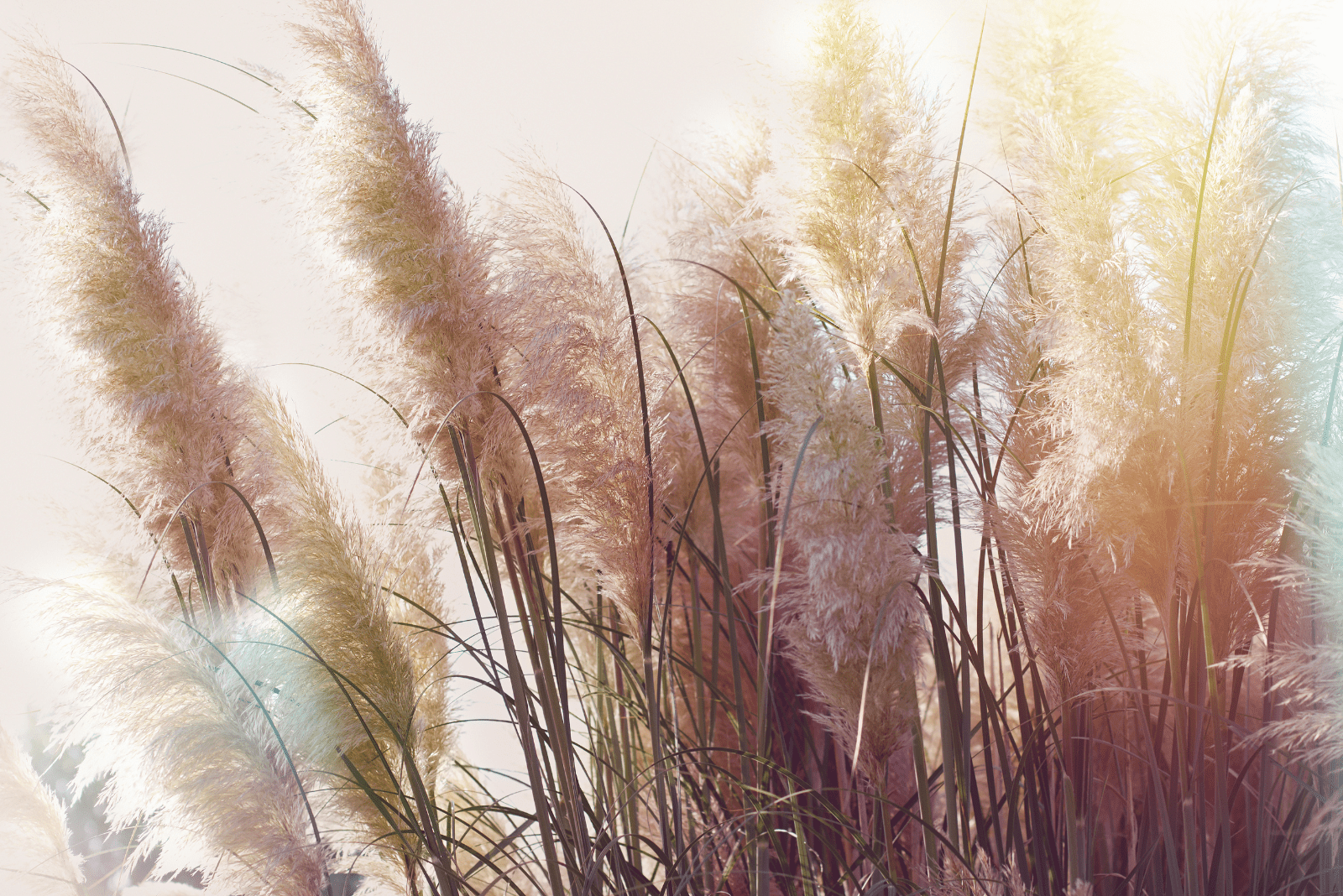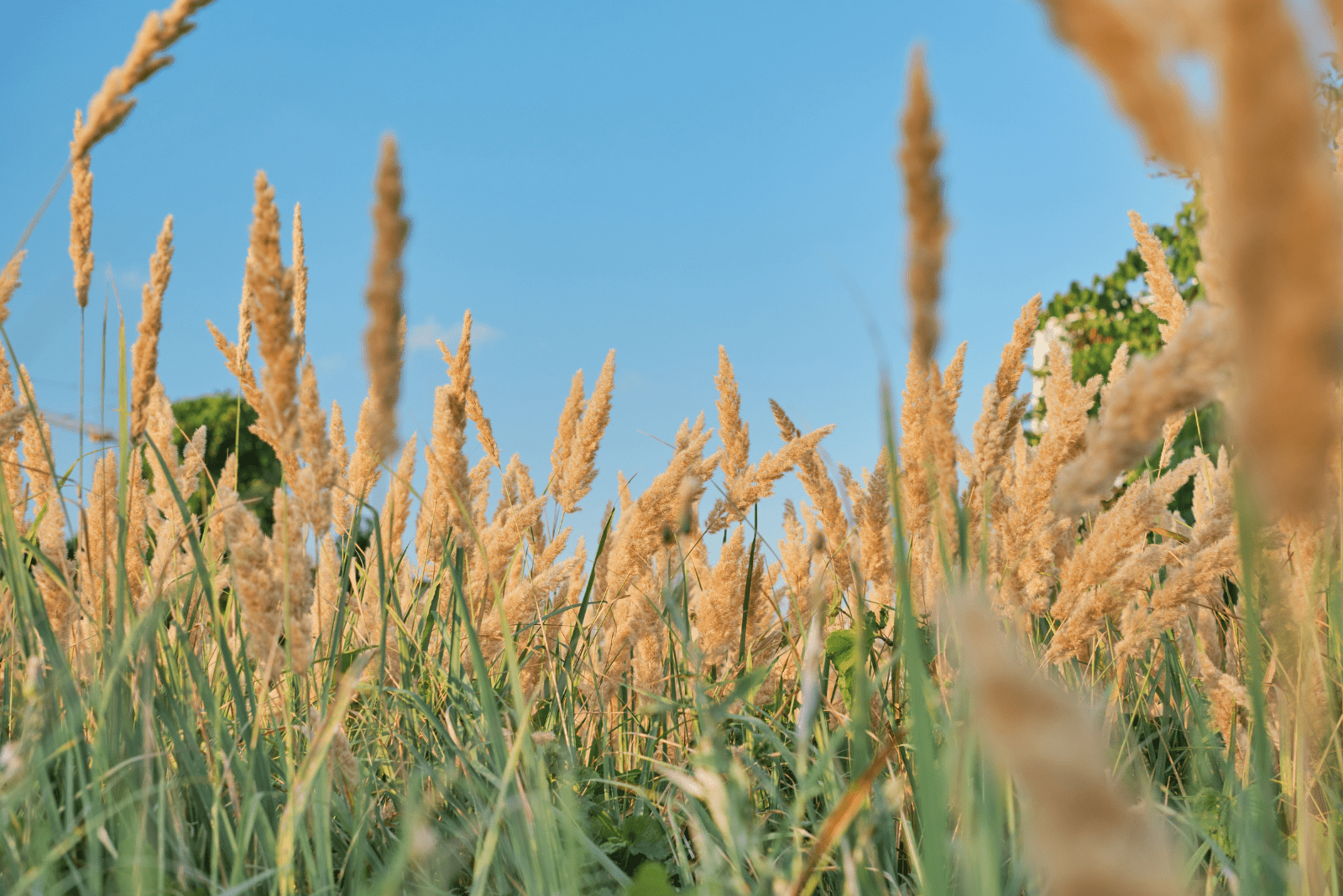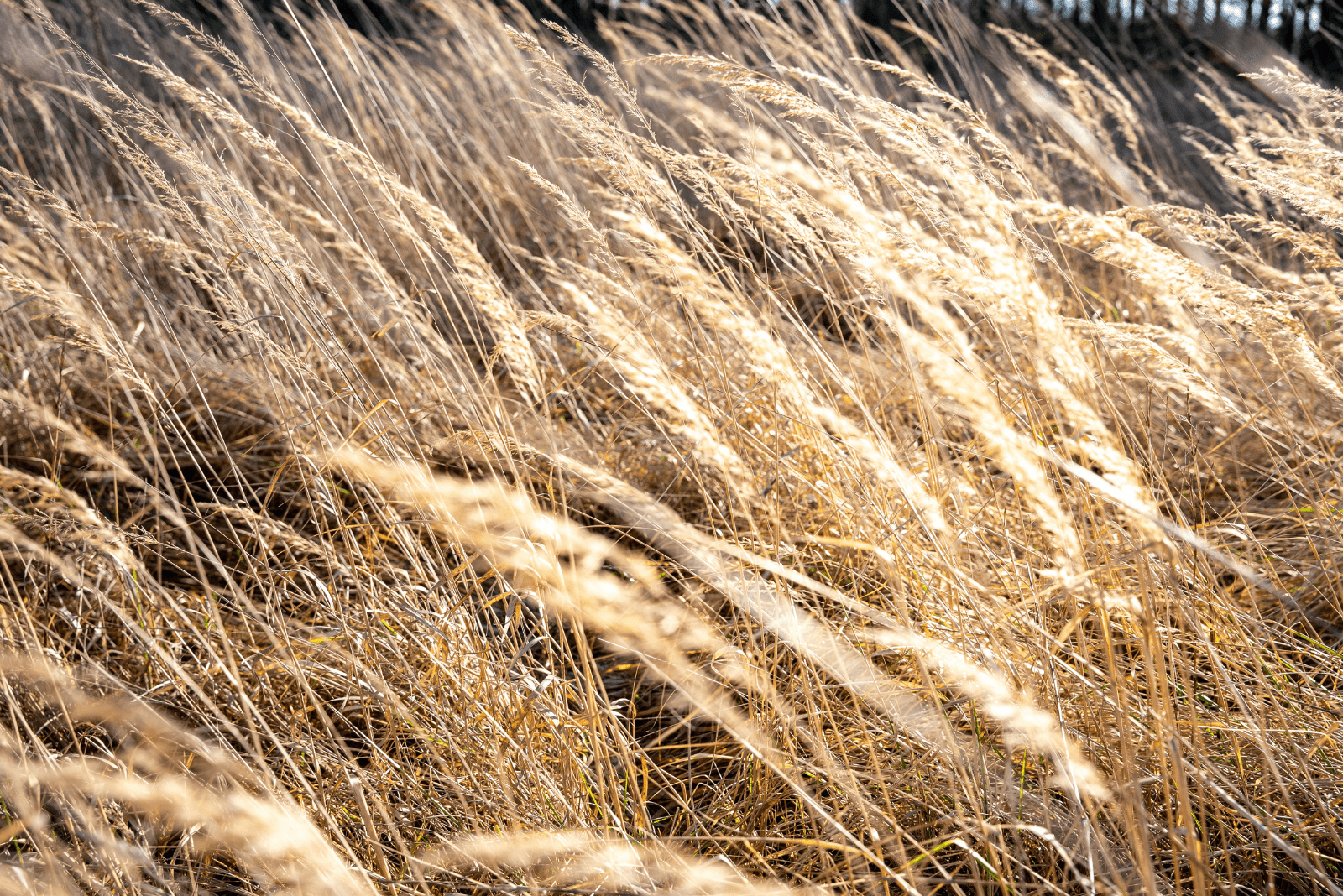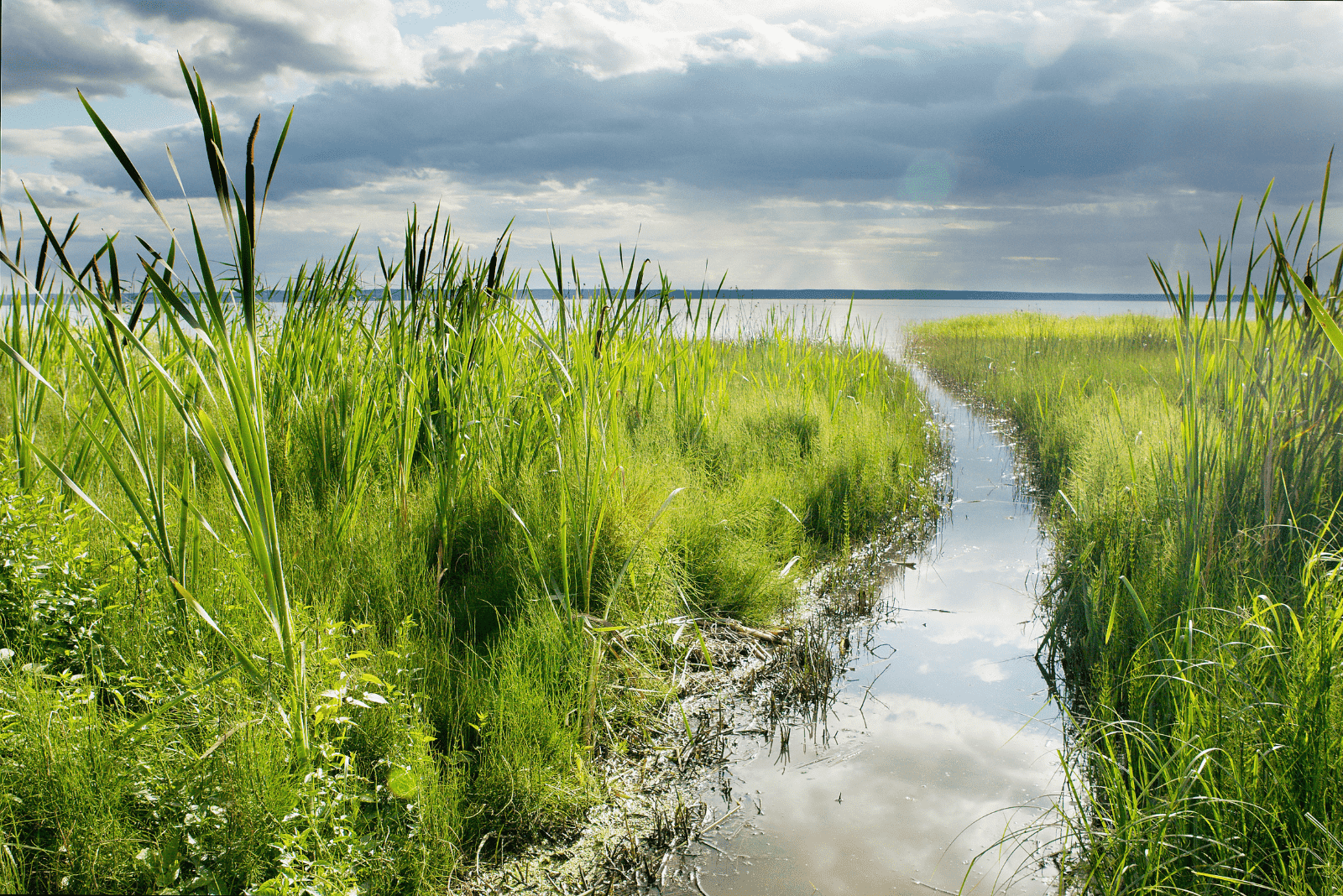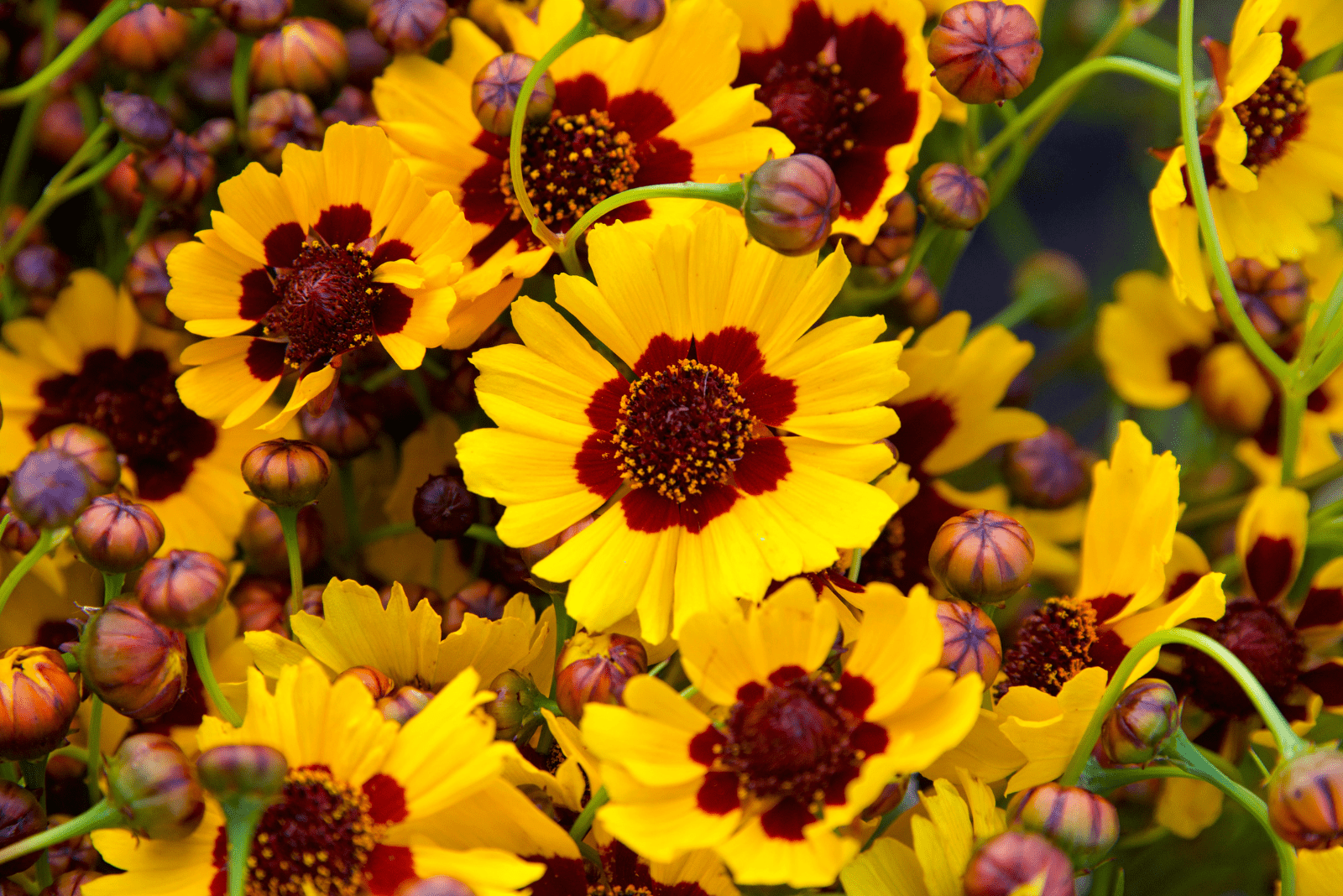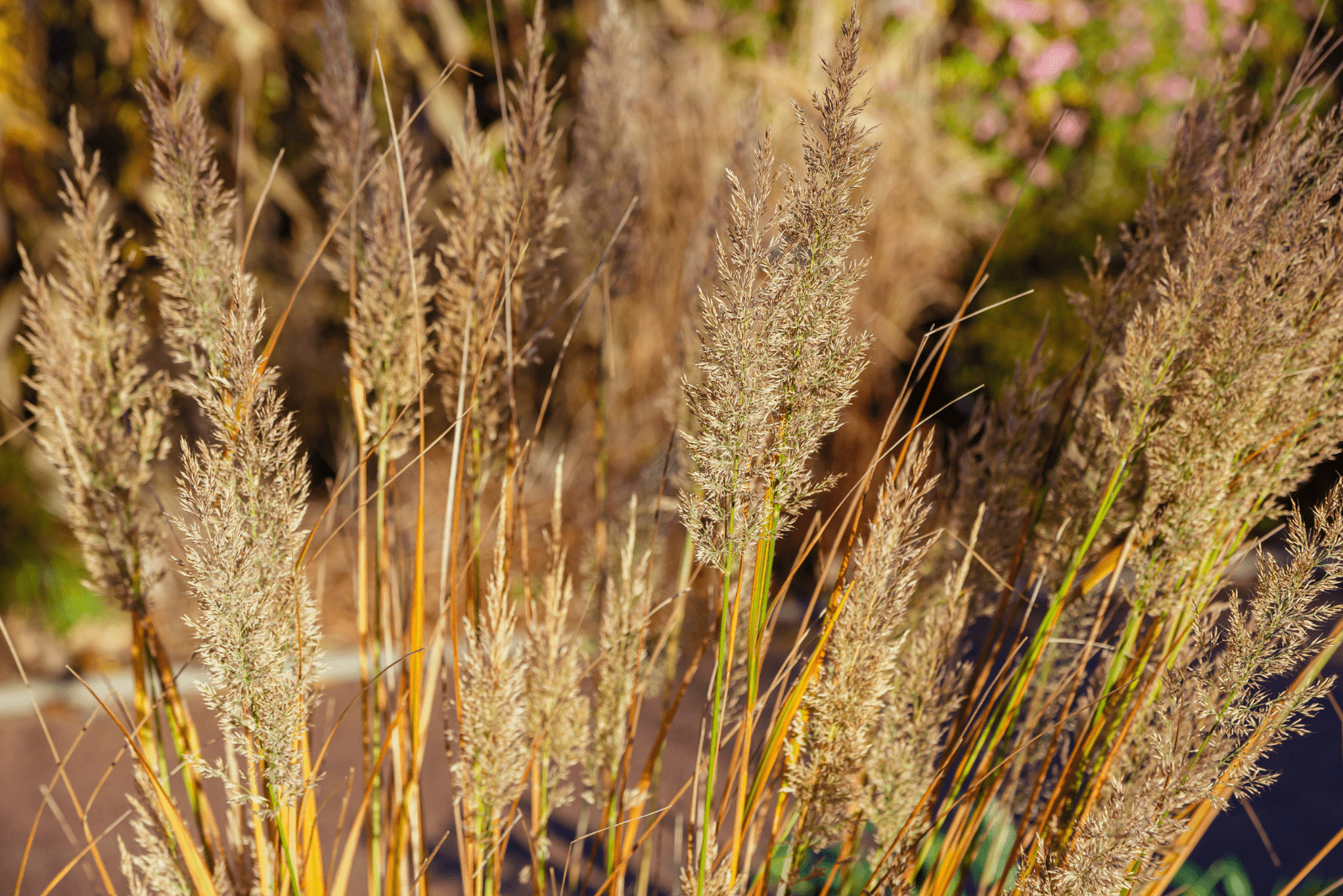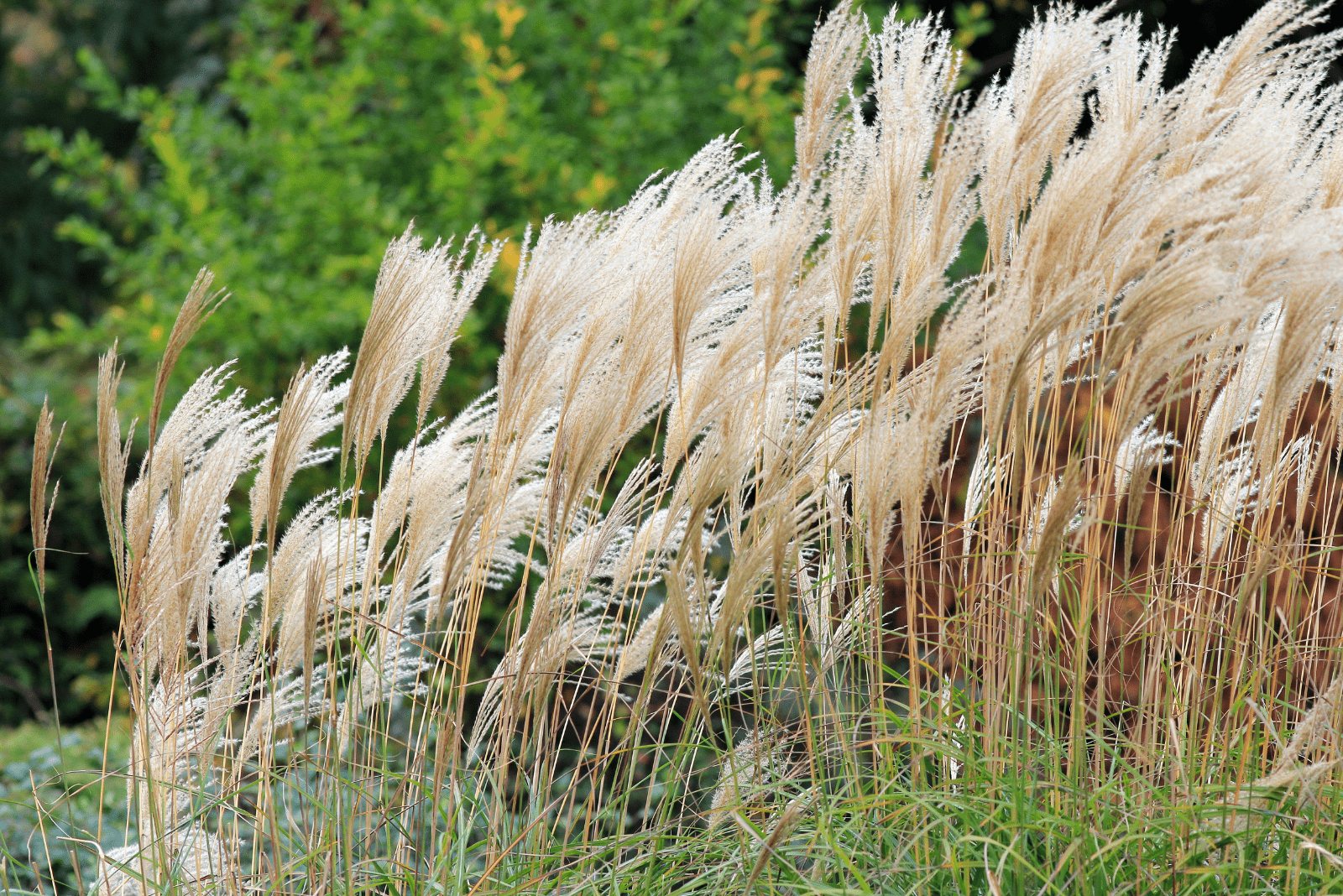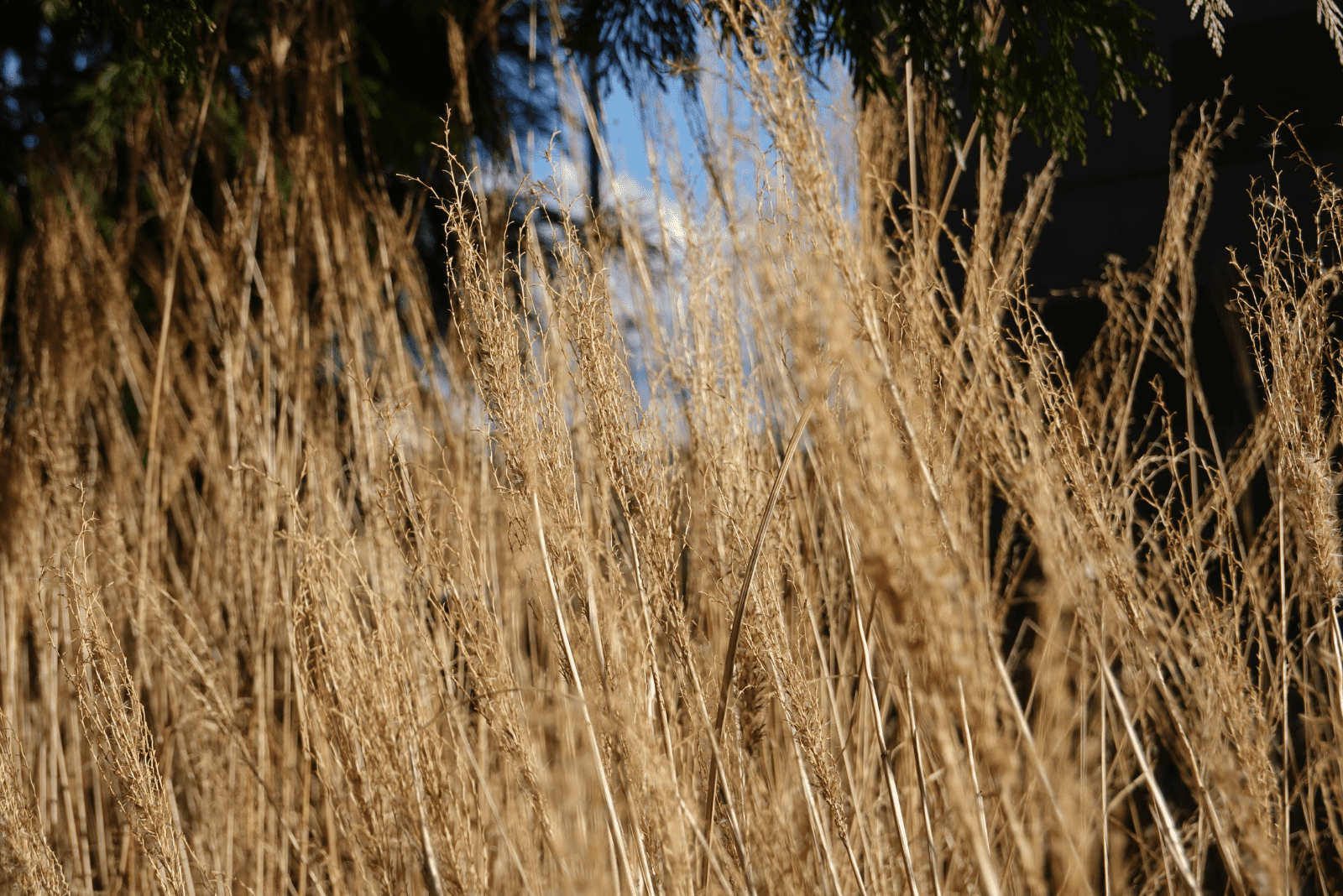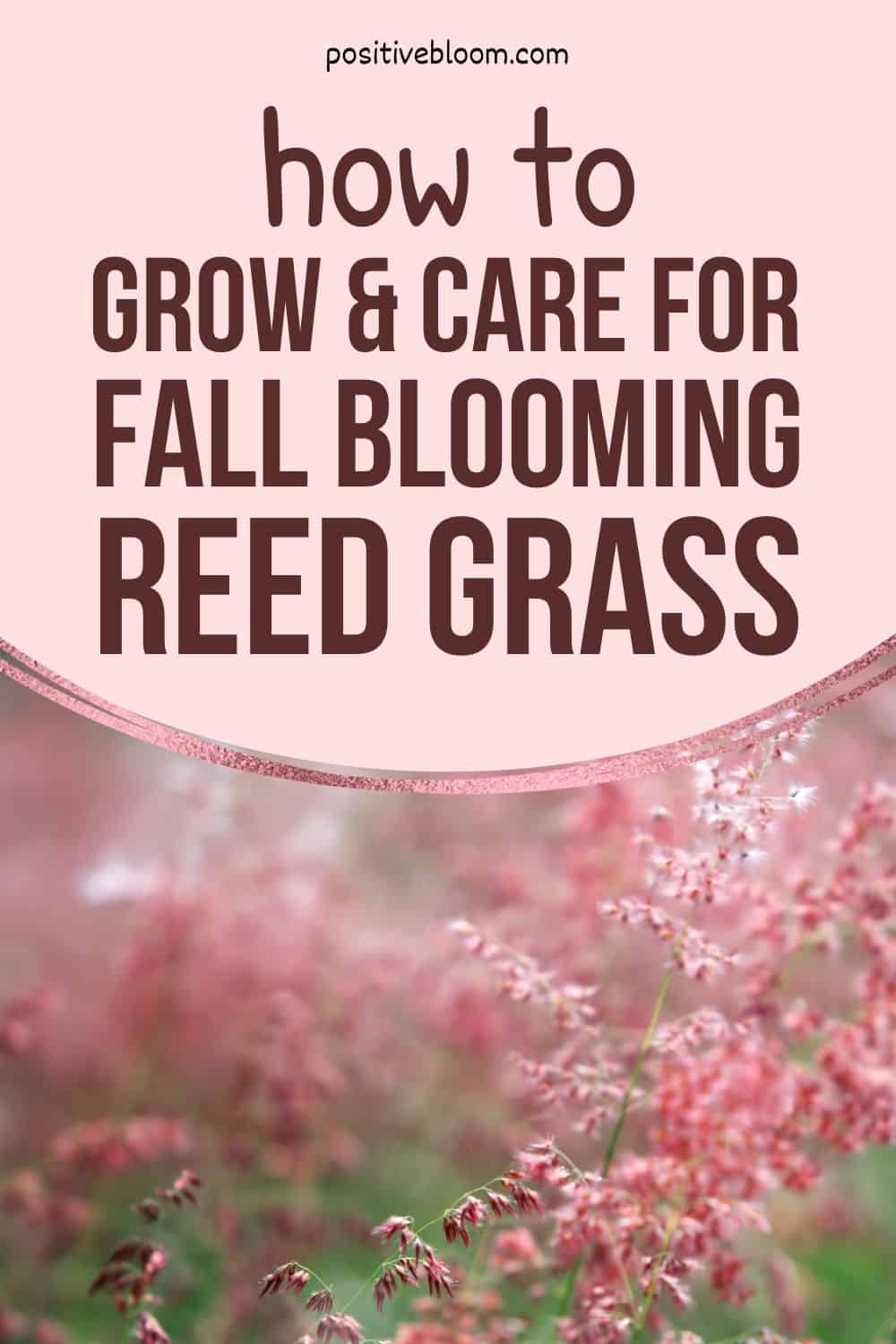Before I started growing plants, I didn’t know that there were so many types of grasses. Honestly, they all looked similar, and I used to mistake them for other plant types.
However, I fell in love with grass when I entered the gardening world. I was intrigued by the stunning appearance of the different types.
One such type is fall blooming reed grass, and today, I’ll tell you everything that you need to know about it.
It’s undoubtedly one of the prettiest and easiest-to-grow grasses, so adding it to your garden is a perfect idea.
It produces flowers and many other grass varieties don’t. As fall approaches, everything can seem pretty dull if you aren’t in fall colors. You can cheer up your garden by adding this reed grass, with its fascinating purplish flowers.
Before we move on, here’s some basic info on this unique blooming grass!
[table id=266 /]Let’s get started!
Fall Blooming Reed Grass: Features
If you are wondering where to plant this fascinating grass, I’m sure you’ll be delighted to hear that it can be planted almost anywhere.
Banks of ponds, erosion-threatened areas, or large lawns look amazing when decorated with this ornamental grass.
So, it’s time to find out what makes this grass so unique!
Flowers & Foliage
During spring, this type of grass produces eyecatching green foliage. Now, the question is, is there any grass that doesn’t do this? We don’t think so!
Well, during the summer, this grass produces tall stems that will become the new homes to airy panicles.
In late summer, the feather reed grass develops purplish seed heads, and that’s not all! From early fall, the purplish seed heads start turning yellow, and you’ll notice the seed heads turn to a tan color in the late fall.
If you are into flower arrangements, this grass will give you amazing cut flowers.
Size & Growth Habit
You can expect your fall blooming reed grass to reach 36 inches in height. Of course, once the flowers and stems are developed, this grass will then reach about 48 inches.
So, if you decide to grow this type of plant, you’ll need to ensure a space that’s about 24 inches in diameter.
You can plant it next to switchgrass and enjoy a fantastic color combination!
Benefits
This feather reed grass is primarily grown as ornamental grass, but growing it also has other benefits. First, you’ll ensure food for birds as they like the seeds of this type of grass.
This is also low-maintenance grass, so you don’t need to spend a lot of time caring about all its conditions and wondering if everything is fine.
You can also grow this type of grass in pots; I used it as a focal point for my patio.
Care Guide For Calamagrostis Brachytricha
If I had to use one word to describe a care guide for this beautiful plant, it’d most certainly be SIMPLE.
Here’s a table with some short care instructions (if you are in a hurry).
[table id=267 /]Let’s get into the details!
Light Conditions
Overall, all grasses thrive best when they get plenty of full sun. Taking into consideration that warmer climates are characterized by strong sun, we can’t expect all plants to grow well when receiving the same amount of full sun.
In other words, some grasses will need partial shade during the hottest parts of the day.
Feather reed is one of these grasses; it loves full sun but won’t do well with longer exposure to it in warm climates. So, I recommend providing it with some shade during summer if you live in warmer climate zones.
On the other hand, be careful with shade too. This grass doesn’t withstand full shade, especially for an extended period. Also, don’t let it grow in part shade for too long.
Firstly, you won’t see fall blooms if your grass grows in the shade. Secondly, the leaves will become droopy, and thirdly, your grass’s overall health will be questionable.
Humidity & Temperature Conditions
Humidity levels aren’t of great importance to this ornamental grass, and you shouldn’t have any issues related to it. What this grass loves is good air circulation.
On the other hand, the temperature may be the tricky part. This plant is generally characterized as warm-season grass. Still, extreme heat isn’t an option when it comes to the temperature.
Your goal is to help the plant to develop a robust root system, so it can absorb enough moisture and prepare for warmer weather.
The best option is to plant this type of grass before the temperatures rise above 75 degrees Fahrenheit.
Lower temperatures are not fatal to this Calamagrostis plant. However, in the northern regions of its growth zones, covering the plant with a layer of mulch can be useful to shelter it from the harsh winter weather.
Soil Requirements
When it comes to the perfect soil type for this particular grass, it thrives best in fertile soil that is always moist. However, the soil should also be well-draining, as you don’t want water to pool around reed grasses’ roots.
It’s not always possible to ensure such soil, but luckily, this grass does pretty well in other types of soil.
For example, it will grow well in heavy clay soils as they are fertile and don’t have many problems with water retention. So, your grass will have enough nutrients and be protected from extreme heat if you grow it in heavy clay and water it regularly.
Many gardeners wonder which plants to grow in the wet parts of their gardens. Well, that’s one of the reasons why this grass is a perfect choice.
You can plant it in very moist areas, such as on the banks of ponds.
Watering
Brachytricha grass is a low-maintenance plant, and it’s not hard to ensure all of the conditions that are required for it to thrive. So, it’s not demanding when it comes to its watering needs.
When discussing how frequently to water this grass, I have to mention that there’s no fixed watering schedule.
You should ensure enough water for the soil to always have moisture. In other words, wait until reed grass soil dries up an inch below the soil line and then water it.
Watering depends on factors such as temperature and the growing stage. For example, this grass will need more water during the first growing season.
Frequent watering (not too frequent) will help the grass to develop a strong root system, and once it’s established, you can cut back on watering.
Of course, warmer temperatures cause the soil to lose water faster, so you’ll need to water it more often during summer, especially if you live in warmer growing zones.
Fall blooming reed grass can endure a short period of drought. Still, if it lacks water for a more extended period, this may affect its growth rate, and it will most likely not reach its full potential.
Fertilizing
This type of reed grass isn’t a heavy feeder and it will grow well even if it isn’t supplemented with any kind of fertilizer.
However, you can add compost or mulch to boost the nutrient levels in the soil.
I mentioned earlier that this grass grows well in various soil types as long as they are fertile and well-draining.
So, if the soil is too poor, you can add a balanced all-purpose fertilizer at the beginning of the growing season (spring).
Calamagrostis Arundinacea: Pruning
I prune my fall blooming reed grass, usually in late winter, as the seed heads still look great and fresh. But, it’s not a mistake if you do this in the early spring.
On the other hand, the most important thing to avoid is pruning the new leaves, so make sure to prune before new growth occurs.
You can prune the crown so that a few inches of grass remain on the ground. The cutting tools needed mainly depend on personal preference, so you can use a hedge trimmer or pruning shears.
Another thing that is essential for ‘healthy’ pruning is sterilization. Never use unsterilized cutting tools, as you may transmit certain diseases and, in that way, damage your healthy plant.
Potting And Repotting
This ornamental grass grows and looks breathtaking when grown in pots. You can place it in your outdoor garden to serve as a focal point.
But, it helps if you consider a few things before potting your feather reed grass. First, you’ll need to ensure an adequate pot for the roots of your reed grass to have enough space to grow, and it has to be larger in diameter and deep enough to fit enough soil in for its roots.
Another essential thing to purchase is a pot that has a lot of drainage holes; remember that this grass performs best in well-draining soil, and you should look for all the possible ways to improve drainage.
Once your reed grass overgrows the pot, you’ll need to repot it. Usually, it takes a few years for this grass to overgrow the pot, so don’t let it concern you too much.
Companion Plants
If you are an experienced gardener, I’m sure you already know the benefits of companion planting. Beginners should know that some plants, when planted together, have many benefits for each other.
Also, your garden looks even prettier if you combine plants that produce contrasting flower colors.
So, let’s look at what to plant next to our reed grass!
Coreopsis
If you are not sure what plant Coreopsis is, maybe tickseed rings a bell. The flowers of these fascinating plants come in various colors, such as orange, red, yellow, white, and pink.
The blooming time of these species is in summer, and the plant continues producing flowers through fall.
Remember that the Coreopsis species aren’t frost-tolerant, so wait until the last frost passes and then plant them.
I recommend growing varieties such as Coreopsis Grandiflora Golden Showers and Coreopsis Verticillata Moonbeam.
Blazing Star
Liatris, often referred to as Blazing Star, is a plant that is indigenous to eastern parts of North America.
It belongs to the Asteraceae family, but unlike most members of that family, Blazing Star has extremely distinctive flower heads with small star-shaped blossoms placed around a long, erect bottlebrush stalk.
The slender, unnoticeable leaves, which resemble grass, grow in a basal clump, making this plant a perfect companion for your reed grass.
Coneflower
Coneflowers are fast-growing plants that can reach 4 feet tall. You can see them bloom in the middle of the summer until late fall.
These plants got their name due to their elevated cone-shaped centers that may bring pollinators such as bees to your garden.
These plants are also low-maintenance; when they develop a strong root system, it seems like nothing can destroy them.
I recommend varieties such as Tennessee Coneflower and Cleopatra.
Black-eyed Susan
The low-maintenance and magnificent Black-eyed Susan has become a common garden plant.
Broad, rough-textured, ovate-shaped, bright yellow petals with almost black centers (hence the name Black-eyed Susan) rise in daisy-like rays above the foliage.
This plant is indigenous to the Midwest and can be found thriving in open spaces and alongside roadsides. It’s a fantastic option for gardens with lots of wildflowers because of its capacity to self-seed. It can be planted in the spring following the last frost.
Speedwells
The most popular plant from the genus of flowering plants, Veronica, and particularly well-liked, is Veronica Spicata, commonly known as Spiked Speedwell or simply Speedwell.
Growers seem to love this plant, probably because of its magnificent flower spikes and star-shaped blooms in an eye-catching shade of bluish-violet.
Although it’s a fast-growing plant, it isn’t considered invasive, so I highly recommend planting it in your garden together with reed grass.
How To Propagate Feather Reed Grass
The bad news is that this type of grass can’t be propagated by seeds. The seeds are sterile, meaning that they won’t germinate under any circumstances.
If you are disappointed with this fact, I have something to cheer you up. When plant seeds are sterile, the plant can’t spread uncontrollably, meaning that it won’t be invasive and take over your garden.
But, what you can do is divide the clumps. Taking into consideration that the plant can’t spread via seeds, it will develop larger clumps, meaning that its underground rhizomes will spread.
It will take about 5 years until the clumps grow too large; they won’t be able to receive sunlight, and the airflow within the soil will be restricted.
Dig up the fall blooming reed grass clump and gently take it apart before new growth begins, trying to retain as many whole roots as you can. Your separated clumps can be planted wherever you wish.
Types Of Fall Blooming Feather Reed Grass
You can find several very famous varieties of feather reed grass on the market.
Here are the most fascinating.
Avalanche
Avalanche was first discovered by Steve Schmidt; it is a variegated type of reed grass, and the variegations are opposite to the Overdam variety that I’ll mention later.
The leaves feature white centers and beautiful green edges. This grass develops clumps in the early summer. Then, the eye-catching “feather” is produced high above the Avalanche’s leaves.
What makes this variety different is its drought-tolerant feature. It’s a perfect variety for mass planting and makes impressive borders.
Karl Foerster
Some growers are into award-winning plants; if you’re one of them, the Perennial Plant Of The Year 2001, known as Karl Foerster ornamental grass, should be your choice.
The breathtaking green leaves develop in 2-feet tall clumps. In the spring, you’ll notice six-foot-tall stems and yellowish seed heads.
Calamagrostis x acutiflora Karl Foerster is not only naturally beautiful, but it also tolerates dense clay and compacted soil and won’t self-seed.
This variety can be grown in sunny, dry areas and used as a companion plant for flower-producing perennials.
As you may assume, the plant got its name after horticulturist Karl Foerster, who made a tremendous contribution to this science by introducing numerous other recognized plants.
Overdam
I mentioned that the Avalanche variety has opposite variegations of Overdam; therefore, Overdam has creamy white edges and fascinating green centers.
You’ll notice even more pronounced variegations if you live in climates with low humidity and chilly summer nights.
This variety is deer-resistant, and due to foliage color, it looks amazing when planted as a border.
Korean Feather Reed Grass: Common Issues
This grass is generally described as problem-free, so it’s really hard to mess it up. Pests shouldn’t cause any severe damage, and the most common disease, fungal rust, is caused by inadequate conditions.
You can also remove any brown tips, otherwise, your reed grass may not produce flowers.
Let’s see the reasons and how to fix the issues!
Pests & Diseases
Luckily, pests aren’t really attracted to this type of ornamental grass. Aphids and mites may occur from time to time but won’t damage your grass.
If you spot these tiny creatures on your Brachytricha, you can mix insecticidal soap with water and spray over pests.
On the other hand, your feather reed grass may get diseases such as fungal rust, especially if you live in areas affected by frequent rainy spells.
High humidity is most likely the reason why your plant gets a disease. You can use a fungicide, but I highly recommend ensuring good air circulation to avoid such issues.
Brown Tips
If you add too much water to the soil, your grass may develop brown tips. I mentioned earlier that this grass grows well in wet areas, so browning rarely occurs due to overwatering.
But, if you add too much fertilizer, your reed grass will most likely develop brown tips.
Feathery Plumes Aren’t Developing
I think that feathery plumes are the best feature of this type of grass. And if they don’t develop, it can be pretty stressful.
What causes this issue? Grasses need a lot of sun during bloom time; the same goes for fall blooming reed grass. When reed grass lacks light, it won’t produce blooms.
However, if the nitrogen concentration in the soil is too high, the plumes won’t develop either. So, you’ll need to neutralize the nitrogen by adding fertilizers rich in phosphorus, or you can also add bone meal.
FAQs
What is the scientific classification of a fall blooming reed grass?
Fall blooming reed grass belongs to the family of Poaceae, which encompasses many other flowering types of grass. This grass is a part of the Calamagrostis genus that comprises over 260 species, including Brachytricha.
What is the lifespan of fall blooming reed grass?
This type of grass has a medium growth habit. If you ensure all of the conditions needed for optimal growth, you can enjoy its appearance for about 10 years.
The essential thing to understand is how much sun to give this grass. It will be happy and thriving if it has plenty of sunlight during the growing season.
What kind of grass is it?
Fall blooming reed grass is lawn grass that is characterized by purplish flowers and tan-color seed heads. The other types of lawn grasses include ryegrass, often confused with fescue, bermudagrass, flame grass, and bluegrass (cool season grass).
You can plant them together to get the prettiest lawn, painted with beautiful fall colors.
Wrapping Up
If the question is how to make fall blooming reed grass happy, the answer is plenty of sun and a lot of water.
Yes, there are some other requirements that you’ll need to meet, but generally, the ones listed above are the most important.
So, if you ask which plant to grow in your garden that blooms in fall and produces the most beautiful flowers, the answer is Calamagrostis Arundinacea var. Brachytricha, also known as fall blooming reed grass!
Until next time!
Like this post? Share or pin it for later!

